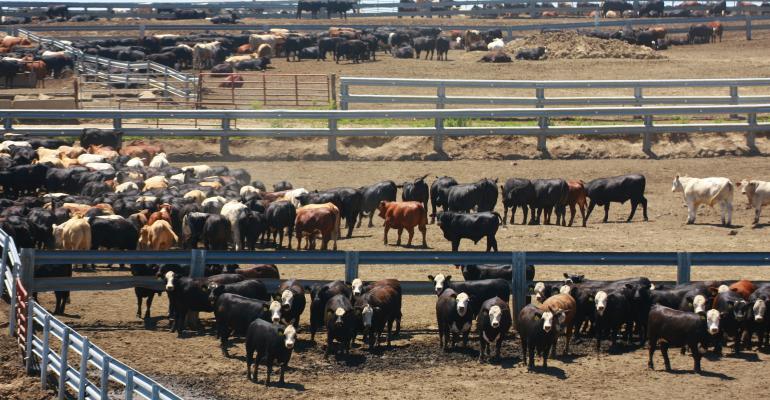
Agricultural News
Dr. Derrell Peel on Beef Demand and Macroeconomics
Mon, 03 Aug 2020 09:18:44 CDT
 Mondays, Dr. Derrell Peel, Oklahoma State University Extension Livestock Marketing Specialist, offers his economic analysis of the beef cattle industry. This analysis is a part of the weekly series known as the "Cow Calf Corner" published electronically by Dr. Peel and Dr. Glenn Selk. Today, Dr. Peel talks about Beef demand and macroeconomics.
Mondays, Dr. Derrell Peel, Oklahoma State University Extension Livestock Marketing Specialist, offers his economic analysis of the beef cattle industry. This analysis is a part of the weekly series known as the "Cow Calf Corner" published electronically by Dr. Peel and Dr. Glenn Selk. Today, Dr. Peel talks about Beef demand and macroeconomics.
The U.S. economy was wracked like never before in the first half of the year. The Bureau of Economic Analysis (BEA) released preliminary estimates showing that U.S. Gross Domestic Product (GDP) declined by an unprecedented 32.9 percent year over year in the second quarter of 2020. This follows a five percent first quarter decrease compared to last year. This highlights questions about the impact of the pandemic on beef demand in the first half of the year and, more importantly, beef demand for the remainder of the year.
The first half of 2020 was a confusing mix of beef demand and supply dynamics, complicated by dramatic disruption of beef supply chains. Overall beef demand was difficult to judge accurately as surging retail grocery demand was offset by sharply diminished food service demand and all obscured by temporary supply shortages that reduced overall beef availability. Record overall wholesale and retail beef prices masked a variety of impacts in various beef product markets related to the type of demand for the product and the ability to shift product from food service to retail grocery supply chains.
Beef supply conditions have stabilized, albeit at higher levels of production year over year in the second half of 2020. Beef demand will be critical in determining overall beef prices and, subsequently, cattle prices going forward. Beef demand, as for any product, is generally a function of consumers' willingness and ability to purchase specific quantities of the product at various prices of the product.
Willingness to purchase beef consists of a couple of components. Underlying consumer preferences determine overall demand for beef. Tastes and preferences tend to be relatively stable, evolving over longer periods and generally appear strong, i.e. beef is popular. In the short run, willingness to purchase beef will depend on the relative prices of other products, particularly substitute products that may be consumed in place of a particular product. For specific beef products, this is a complicated consideration, including other proteins such as pork and poultry, as well as the multitude of other beef products that may be chosen by consumers. In periods of low income, beef consumers may "trade down" from high cost beef products to lower valued products. Food service demand, which remains diminished, will emphasize this impact going forward.
Ability to purchase a product is related to the level of consumers' discretionary income. Consumers must have income to purchase a product regardless of how much they desire the product. Generally, macroeconomic conditions including overall GDP levels along with unemployment are indicative of income levels. The U.S. economy is in recession and will be for the balance of the year and likely into next year. Unemployment peaked at 14.7 percent in April before declining to 11.1 percent in June. Unemployment is expected to decline but will remain elevated in the second half of the year. GDP is projected to be lower for the remainder of the year with annual estimates down in a range of 6.5 to 8.0 percent year over year. In the first half of the year, the dramatic drop in GDP and increase in unemployment did not correspond directly to similar beef demand impacts because federal stimulus and unemployment benefits partially offset direct negative economic impacts on consumers. Macroeconomic conditions as well as the status of economic support will play a key role in overall beef demand going forward.
WebReadyTM Powered by WireReady® NSI
Top Agricultural News
More Headlines...




